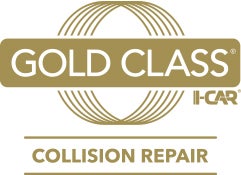Tips for Driving in Heavy Rain this Spring
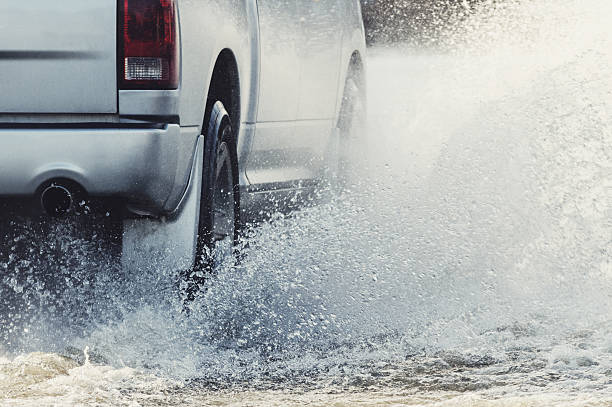
April showers may eventually bring May flowers, but until that time arrives, they mostly bring headaches to drivers everywhere. Your vision is compromised, your brakes are slower to respond, and your fellow drivers can become more erratic. Suffice to say, the chances of an accident increase significantly in heavy rain.
That’s why we have your back with these tips for weathering stormy conditions this spring. Courtesy of Avalon Honda, here’s how you can keep yourself safe when caught in a spring storm.
Make Sure Your Windshield Wipers Are Prepared to Go
Your main line of defense against severe rainfall is, of course, your windshield wipers. If you haven’t swapped in a fresh pair this year, they’re probably exhausted from battling ice and snow over the course of our long, Jersey winter. Dull wiper blades can hurt your windshield as much as help it, leaving streaks and smears that can severely compromise your windshield’s visibility. Getting yourself a crisp new set of blades for the spring is your first step towards being prepared when it starts to pour.
Avoid Heavy or Abrupt Braking
Every year, 75% of weather-related accidents occur on wet pavement – and 47% happen during rainfall. Practice more cautious braking technique when driving in storms, as it takes significantly longer to come to a complete stop. Instead of braking abruptly, take your foot off the accelerator earlier than you normally would, allowing your car to glide to a natural stop. Then, apply light pressure to the brake pad to coast to a gentle halt.
Beware of Hydroplaning
Just as it takes longer to come to a complete stop on wet surfaces, hydroplaning is more likely to occur. Hydroplaning occurs when your tires lose traction, causing your car to drive on the surface of the water rather than the surface of the road – which, in turn, causes you to momentarily lose control. If you start to hydroplane, do these three things in order: remain calm, take your foot off the gas pedal, and steer in the direction you want to go. To avoid hydroplaning, be on the lookout for standing water, steering around it rather than confronting it straight-on. And remember that our Tire Center is always at your disposal when you’re in need of a fresh set.
Maintain Your Distance from Other Cars
During a thunderstorm (but really, any time), you should not be aggressively tailing slow drivers. Since we’ve established your car’s reaction and braking times are longer in wet conditions, you’re risking a fender-bender situation just by being close to other vehicles. Double your normal following distance instead, leaving a wide proximity between yourself and your fellow commuters. This also helps avoid water being splashed onto your windshield by larger vehicles – another viable visibility threat.
Leave Your Headlights On
In New Jersey, it’s state law that you must have your headlights on while your windshield wipers are in use. But regardless of where you live, having your lights on during a storm is both common sense and common courtesy. Not only is the added visibility necessary for your driving purposes, but it also alerts other drivers as to your location in these unclear conditions. There’s literally no downside to leaving your headlights on in the rain, so get in the habit of doing so.
Anticipate the Unexpected
You never know when an April storm is going to hit. If the sky looks ominous and you haven’t hit the road yet, try to delay your departure until the weather improves. Inevitably, though, there will be times when you’re on Route 9 towards Cape May, the sky takes a turn for the worse, and the next exit isn’t for miles. (In this situation, don’t hesitate to pull over on the side of the road and wait for the worst to pass.)
The best you can do is keep your car prepared for a downpour at all times. That’s where the trained professionals at our Service Department enter the picture. Schedule your service appointment with Avalon Honda today and let us tend to your wiper blades, brakes, oil change, and more. And while you’re here, check out our expansive inventory of new and used Honda vehicles. From the always-reliable Honda Accord to the powerful Pilot SUV, we’re sure to have the perfect companion for all the sunny drives that await, after the clouds part.
Your Spring Checklist: Five Things to Address First
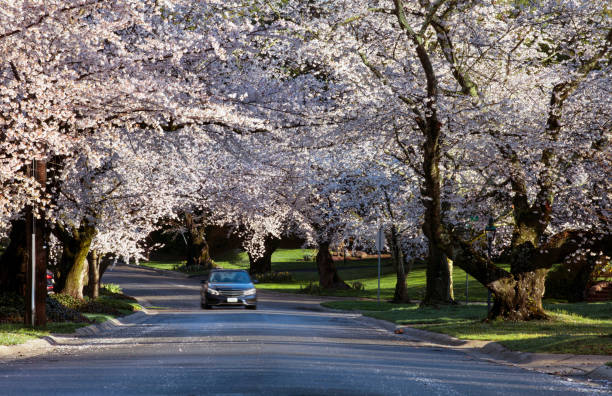
Spring is finally upon us, meaning Opening Day of the baseball season, Mother’s Day, and a plethora of airborne irritants. At long last, it’s time to leave the familiar confines of home behind and embark on outdoor adventures. Of course, before you can do so, you need to make sure your vehicle is in a proper state to get you to your various spring destinations.
Courtesy of Avalon Honda, here’s a handy checklist of what components need inspecting before you put your vehicle back on the road. While they’re listed by approximate order of importance, make no mistake that each is vital to your Honda’s short and long-term health.
1. Battery
Your battery runs a greater risk of depletion during colder months, so the first thing you want to do when the weather warms up is make sure your battery is along for the ride. Although the average car battery lasts between four and five years, it drains at a much higher rate in extreme elements. That makes spring the logical time for a battery diagnosis, so that you can replace it before tourist season begins and your engine starts to cook in the summer heat.
2. Fluids
As surely as you spent the winter throwing back spiced beverages, your vehicle was guzzling through its own fluids. Change your oil if you haven’t done so since last summer, and consider switching your oil’s viscosity to a heavier weight for the warmer weather ahead. Keep your engine oil full to keep your engine protected and functioning normally. Refill your brake fluid, steering fluid, and coolant to their appropriate levels. Lastly, top off the windshield fluid: if not empty, it’s probably nearly spent from combatting sleet, salt, and other winter build up.
3. Tires
Just as batteries are more susceptible to drainage during colder months, your tires stand a greater chance of deflation. For every 10 degrees the temperature drops, your tires could lose a full PSI. If you swapped out for winter tires last year (and kudos if you did), now is the time to transition the switch back to summer tires. If you’re rolling with the same tires, make sure to measure your air pressure pronto. Look for your tires’ recommended PSI levels on the sticker inside your driver’s door and inflate accordingly. Need a new set of wheels for the new year? Look no further than Avalon Honda’s Tire Center.
4. HVAC System
If you had the heat in your car running continuously throughout the winter, that means the same HVAC system that controls your air conditioning hasn’t been taking a vacation. Make sure you have cool air coming out of your vents before it really gets sweltering. Refill your coolant until it reaches its appropriate levels. Lastly, replace your cabin air filter, as it’s likely accumulated a good deal of dust, dirt and debris during the winter.
5. Wiper Blades
Your windshield is often working overtime to maintain visibility during the winter. Between snow, ice, frost, and salt, there’s more than enough to keep your blades occupied. As the rainy spring season approaches, take this time to install a set of well-functioning, seasonally appropriate blades.
Checkmate
If you’ve checked off all five items from your list, congratulations! Your vehicle is officially spring-certified. And if you need help with any part of your checklist, fear not: Avalon Honda’s Service Center has you covered. From tire rotations to oil filter changes, we’re your one-stop shop for all your Honda’s maintenance needs. Schedule your service with us today.
This Easter, hop on down to Avalon Honda; we’ll make sure your Honda is set to deliver you to all the adventures that await you this spring and beyond.
The Honda Pilot is Back (In Black)
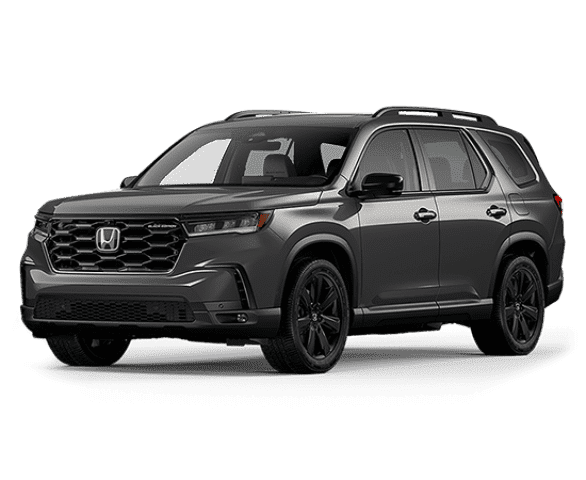
All systems are a go for the 2025 Honda Pilot. The fourth-generation midsize SUV returns for its 2025 model year, and its biggest shake-up has nothing to do with turbulence.
The Pilot’s base-level LX trim is out, and its Black Edition trim is now its primary model. That’s right: the Pilot has gone black, and has no desire to go back. Avalon Honda has more on what that means for you moving forward.
Paint It Black
The current version of the Black Edition trim recently partnered with the 2024 Passport lineup. Amongst its exterior features are black 20-inch wheels and black accents on the grille, mirror housings, and door trim. The Pilot has quite literally been painted black, vividly and tastefully.
The interior follows suit, with a pleasingly dark palette running throughout the cabin. “Black Edition” is embossed on both the front seats and floor mats, though the black leather stylings of the seats and upholstery make this evident enough on their own. The seats, steering wheel, and door panels are all accentuated with trim-exclusive red contrast stitching. Meanwhile, red accent lighting subtly illuminates the cabin.
The combined effect makes you feel like the owner of a club, exclusive to one.
Cleared For Takeoff
As with previous fourth-generation models, all 2025 Honda Pilots are powered by a 3.5-liter V-6 engine making 285 horsepower. It comes with a 10-speed automatic transmission and standard front-wheel drive, with available all-wheel drive.
What isn’t changing with the Pilot is its unheralded spaciousness. While it rightfully defers to the larger Odyssey as Honda’s go-to family vehicle, the Pilot’s interior is impressive in its own right. The three-row, eight-passenger Pilot offers more legroom in the third row than any of its competitors, while still offering additional storage space behind it.
Get Your Wings Today
Clear skies lie ahead when you shop at Avalon Honda for your next new or pre-owned vehicle. Explore the award-winning Honda Civic or the family-friendly Honda Odyssey, both a part of our extensive Honda inventory.
While we await the 2025 Honda Pilot’s arrival, immerse yourself in our electric options. From EV charging to hybrid battery replacement, we’re your reliable home when you decide to make the switch to electric.
At Avalon Honda, you’ll find everything you need to keep you on the road, from our Tire Center to our Collision Center. Drive down to Avalon Honda today and discover the brighter tomorrow that’s calling to you.
Honda Enters Its Space Age with the 0 Series
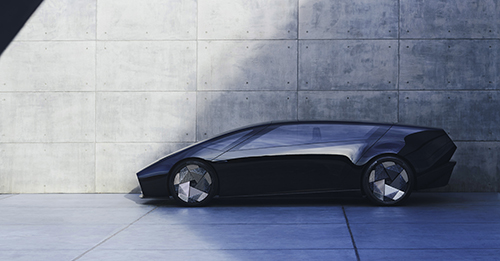
When you dream of the future, what do you see?
Electric vehicles have often been touted as “the cars of the future” or “the next thing.” But that’s a bit of a backhanded compliment; we celebrate EVs for their future potential, while brushing aside their present virtues.
That’s finally starting to change – and leaders like Honda are a big reason why. Honda’s striking new 0 Series suggests the electric future we’ve collectively envisioned may in fact be imminent.
Last month at the Consumer Electronics Show (CES) in Los Vegas, Honda unveiled its latest electric concepts. The first two vehicles in the forthcoming Honda 0 Series – the Saloon and the Space-Hub – were put on full display, wowing audiences with their bold, futuristic designs. Quite simply, both EVs look like they’ve been dropped in from another world.
At Avalon Honda, we’re ready to blast off into Honda’s new, galactic era. We may be two years away from the debut of the 0 Series, but these EV concepts tell us a bit of what we can expect.
The Saloon

When the 0 Series officially debuts in 2026, the first production car in North America will be based on the Saloon concept (pictured above). Conceived as the flagship vehicle for the 0 Series, the Saloon doesn’t quite resemble any other EV – or any vehicle period.
While the Saloon will presumably share EV DNA with Honda’s revamped Prelude hybrid, the Saloon is an all-electric creature of its own. According to Honda, it’s a car designed with the driver in mind first and foremost. Its bold design reinforces this, with its horizontally-aligned, pod-shaped body evoking sensations of speed. The Saloon resembles a fastback that just hopped off a race track from another dimension.
The Saloon’s interior will be equipped with the sustainable materials we’ve come to associate with EVs. But its futuristic philosophy extends to its driving features. Honda says the Saloon will debut new steer-by-wire and motion control systems. Three years from now, your car might be capable of transporting you to date night at the Bellevue all on its own.
The Space-Hub

The second concept Honda shared at CES is perhaps even more eye-opening than the Saloon. The Space-Hub shares the same horizontal leanings, but its boxier frame is much more cubic – like a minivan built to traverse the moon’s surface.
Although the concepts don’t give us many specifics as to the vehicle’s features or specs, the interior renderings reveal a spacious and flexible cabin, more akin to the passenger compartment of a limousine than an SUV or minivan. It truly does look as though you’re sitting in the hub of a spaceport.
According to Honda, it approached these new vehicles’ designs with three core principles in mind: that they be thin, light, and wise. Wisdom will reveal itself with time, but the geometric Space-Hub already captivates with its futuristic overtones and interstellar aesthetic.
A Whole New Era
Expect Honda to look a bit different in the coming years. In conjunction with the 0 Series, the brand is expected to introduce a new “H” logo exclusive to its next-gen EV models. The architecture, batteries, technology… all of it will be state of the art, a clean slate for Honda’s next era.
It’s an exciting time to be a Honda driver, which makes this the perfect time to visit Avalon Honda. It may be a few years until Honda’s EV future arrives, but in the meantime, immerse yourself in our extensive inventory of new and used Hondas. Check out the 2024 Honda Accord and explore the world of hybridization before you jump into Honda’s all-electric future. Or get acquainted with the Honda Civic, the Accord’s teammate on Car and Driver’s most recent 10Best List.
It’s anyone’s guess what roads – or constellations – that future may lead to next. Here at Avalon Honda, we’ll help you plot a course forward.
Our Collision Center is Here to Pick Up the Pieces
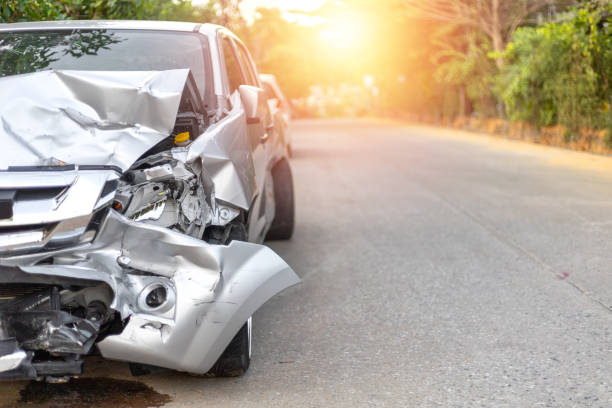
When you get in a car accident, a million thoughts swim through your head at the point of impact. It’s not unlike being swept under the ocean current by a wave, unable to differentiate up from down. As your mind snaps into survival mode, secondary thoughts of repair costs and insurance rates undoubtedly start competing for mental real estate.
Your own health and safety should always be the primary concern when you’re in an accident. And in a perfect world, the status of your car would be a distant, trivial matter. Alas, our world doesn’t stop moving, and both you and your vehicle need to be back on the road as soon as possible.
Fortunately, Avalon Honda’s Collision Center in Cape May Court House turns collision repair and bodywork into a stress-free endeavor. From paintless dent repair to pre-accident restoration, our certified collision repair experts will have your car looking good as new before you know it.
Certified Fresh
When we say your vehicle is in the hands of top auto experts, we’ve got the paperwork to back it up. Avalon Honda is proud to be a Gold Class collision repair business – one of only two iCar Gold Class collision centers in Cape May County. As a Gold Class shop, our service technicians must undergo annual training that brings our operation up to speed with new vehicle technologies and the latest repair techniques.
Though only 10% of America’s collision centers are Gold Class, we weren’t content with stopping there. We’re also Cape May County’s only authorized ProFirst Collision Center, faithfully upholding Honda’s rigorous standards. ProFirst Certified shops immerse themselves in ongoing industry education, continuously earning third party certifications.
As part of our ProFirst certification, our Collision Center has been meticulously inspected by Honda itself. This ensures we have the necessary equipment and training to properly repair your vehicle to Honda’s high caliber. At Avalon Honda, we don’t take any shortcuts when it comes to restoring your vehicle the right way.
Types of Restoration Services Offered
Our team is prepared to service your vehicle in whatever condition it’s brought to us in. From simple scrapes and dents to major repairs, as long as your vehicle isn’t deemed a total loss, we can restore it. Types of services we offer include, but aren’t limited to:
Paintless Dent Repair: Having to fix a dent in your Honda is an inconvenience, but with rare exceptions, it’s hardly a bank breaker. By the time our certified team has popped everything back in its right place, it’ll be as though those dents never existed.
Windshield Repair: When your windshield is struck by a rock or other errant road materials, small impact cracks can be left in their wake. If these diminutive cracks are dealt with promptly, they shouldn’t leave much of a trace. But if left untreated, these small cracks can expand past the initial impact area, endangering the entire windshield. Avoid the cost of a complete windshield replacement and contact us at the first sign of these annoying blemishes.
Bumper Refinishing: If you’ve ever been in a minor fender-bender, you know it’s not the worst thing that can happen to your vehicle from a performance perspective. But from an aesthetic standpoint, scrapes and scuffs on your bumper are an irritating eyesore. Thankfully, bumper covers are removable and can generally be refinished without the need for a full replacement. At Avalon Honda, we’ll make sure everything is straightened out.
Receive Your Estimate Today
If you’ve recently been in an accident and the initial wave of panic has subsided, rest easy; the worst part of the ordeal is behind you. Put your damaged vehicle – and your trust – in the hands of our certified collision repair team here at Avalon Honda.
Get your estimate today and begin the process of turning this incident into a memory. Our team’s job is to remove all evidence of your vehicle’s damage – enabling you to put the past in the rearview and drive confidently into the future.
A Guide to Caring For Your EV During the Winter
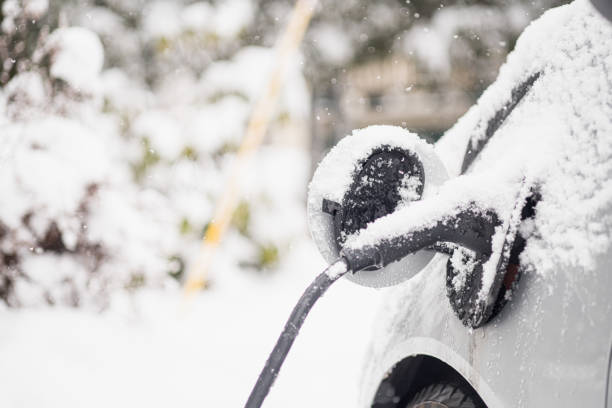
The winds of winter are out in full force, leaving us to make the proper adjustments. The heat is cranked up, the salt is spread across the sidewalk, and the winter wardrobe has once again taken up residence in the closet. Meanwhile, perhaps you’ve noticed your new Honda CR-V acting a bit more sluggish than it did during the summer and fall.
Considering that even traditional car batteries struggle in cold conditions, it should come as no surprise that electric vehicle owners need to stay extra attentive throughout winter. Your EV’s range and performance will inevitably drop a little until the weather warms up, but by implementing these maintenance tips, you won’t have to worry about your EV running out of charge and being stranded in the cold.
Don’t Let Your Battery Dip Below 20%
Due to lower battery performance and increased energy consumption, EV owners can expect a 20-30% decrease in range during the winter. This is normal, as the lithium ions in electric batteries slow down when the temperature decreases. EV batteries aren’t that different from the human body; warm weather is their natural preference, with optimal temperatures of 59-95 degrees Fahrenheit.
So then what to do when winter intervenes? First, as an important precautionary measure, don’t let your battery fall below a 20% charge. Since batteries are more susceptible to sudden depletion in the winter, letting the charge drop to that level is risky. Keep your car charging when not in use – the same as you would with your phone, tablet, or other essential electronic device.
Park Indoors When Possible
If you own a garage or a similar storage unit, try to keep your car parked inside for the duration of winter. Of course, street parking is the only option for many of us. If that’s the case, keep the battery engaged by starting it at least once a day, rather than leaving it parked for long stretches. If you have no choice but to leave it parked for an extended period, make sure the battery is charged to at least 70% to avoid degradation while idle.
You’ll also want to avoid fast (or DC) charging. Though it may not be convenient, it’s healthier for the battery to charge at slower speeds during the winter. Level 1 charging, generally the slowest charging option, is actually the preferable option for cold weather. Additionally, remember to leave your EV in ECO mode.
Monitor Heat Levels
Before heading out to work or run errands, it’s a good idea to preheat your electric vehicle. By incrementally increasing the heat, you can minimize the strain on the battery when you start driving. Whenever feasible, it’s recommended to charge your car while heating it, as this will draw power from the charger rather than the battery, maximizing your daily range.
After warming up the car, try to be mindful of your heat’s usage. Instead of relying solely on the heater, consider utilize your heated seat to keep warm. Consistently blasting the heat will impact your range. Don’t allow yourself to drive in discomfort, but be mindful not to over-exert the heater. Remember, it doesn’t appreciate the winter any more than you do.
Remember That We’re Always Here to Help
If your vehicle is still succumbing to the effects of winter, make a trip to Avalon Honda today. Explore whether a hybrid battery replacement for your hybrid or plug-in might be your best course of action. Here at Avalon Honda, our team of service professionals works around the clock to ensure your vehicle gets the service it needs to make it to Beach Season with a clean bill of health.
Five Times Honda Visited Hollywood
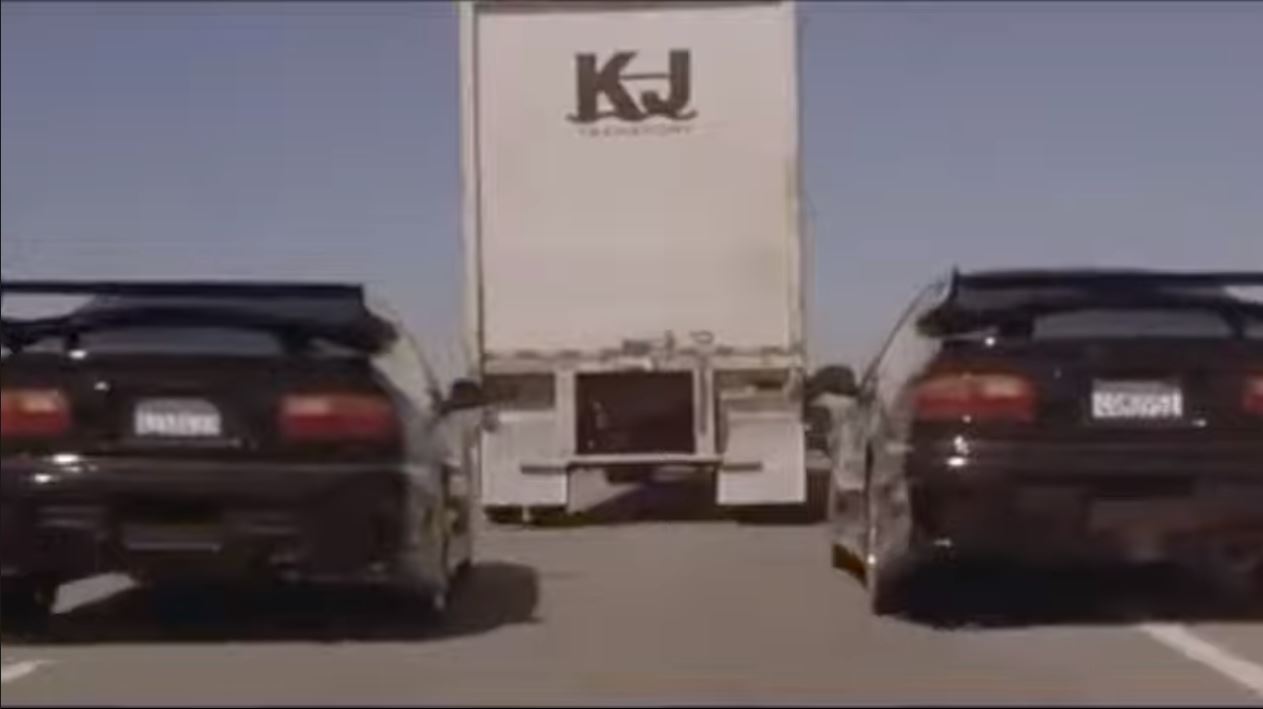
Here at Avalon Honda, we’ve already taken you through Honda’s illuminating history, as we chronicled a small bicycle shop’s rise to becoming one of the most renowned auto manufacturers in the world.
Although Honda has perhaps never achieved A-lister status in the world of entertainment, they’ve still made several notable detours to the silver screen throughout their remarkable odyssey. Here are five of the most memorable Honda appearances in the world of cinema:
Fast Times at Ridgemont High (1982)
One of Honda’s earliest film cameos comes in 1982’s coming-of-age comedy Fast Times at Ridgemont High. Throughout this teen classic, you can spot a 1976 Honda Accord. Though it gets less screen time than its American counterparts (a 1960 Buick LeSabre and 1979 Chevrolet Camaro Z28 amongst them), the Accord’s inclusion was an early indicator that Honda was ready for its close-up.
Pulp Fiction (1994)
Vehicles have always been key components in the films of Quentin Tarantino. Michael Madsen’s 1966 Cadillac Coupe DeVille in 1992’s Reservoir Dogs became well known for its abundant trunk space. Then, Kurt Russell’s 1970 Chevy Nova served as the de facto star of 2007’s stunt-heavy Death Proof.
The 1980 Honda Civic driven by Bruce Willis in Tarantino’s breakout hit Pulp Fiction is significant because it’s Tarantino’s version of an automotive recurring character. The Civic would also pop up in Pulp Fiction follow-up Jackie Brown, and again in 2004’s Kill Bill: Vol. 2. Of course, it also leaves an impression in Pulp Fiction – quite literally, in the case of Marsellus Wallace.
Gone in 60 Seconds (2000)
Early 2000’s Nicolas Cage vehicle Gone in 60 Seconds is overflowing with luxury cars, from Aston Martins to Bentleys to Mustangs. At first glance, it doesn’t seem to be Honda’s kind of crowd. But a speedy Honda Civic Si arrives to stir up some chaos, challenging Giovanni Ribisi’s Porsche 911 in a race and ultimately drawing the attention of local law enforcement.
The Fast and the Furious (2001) & 2 Fast 2 Furious (2003)
It’s hard to steal the spotlight in a film franchise that features as many absurd, dynamic vehicles as The Fast and the Furious. But the first car that ever appears in the franchise is a Honda Civic driven by Vin Diesel. Later, Tran’s Honda S2000 is introduced. That car becomes a highlight of the now-omnipresent series’ first entry, as well as its follow-up 2 Fast 2 Furious.
Let’s be honest: Jesse here was doomed from the moment he underestimated the hundred grand under the hood of Tran’s S2000.
The Road to Stardom Awaits
In the past few decades, the line between film and television has increasingly blurred. Accord-ingly, Hondas have been more prevalent in the world of TV during this time. You can spot Hondas in hit programs such as The Walking Dead, Unbreakable Kimmy Schmidt, and most recently, in last year’s The Last of Us.
At Avalon Honda, we have a starring role waiting for you in one of our new or used Honda vehicles. Come pay us a visit today and immerse yourself in a driving experience fit for a celebrity.
Honda Dominates Car and Driver’s 10Best Awards
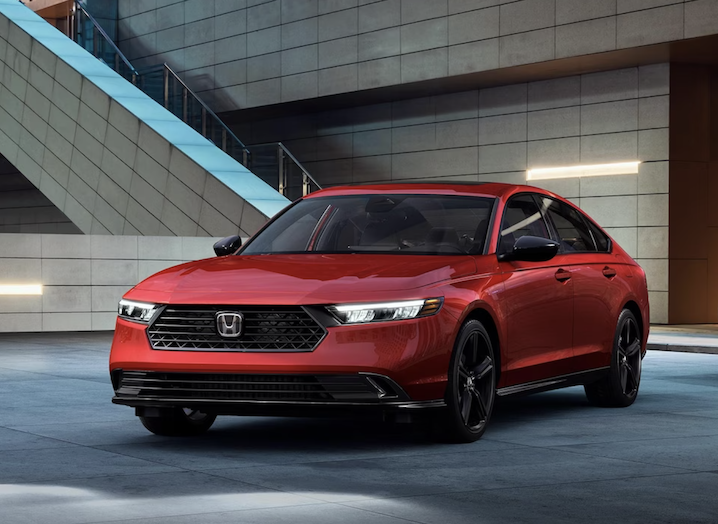
Hollywood’s awards season may just be heating up, but earlier this month, Honda added to its already illustrious trophy case.
Honda appeared on Car and Driver’s year-end lists three times for the second straight year – more than any other brand. The Accord and Civic secured spots on the 2024 Best10 Cars list, while the CR-V appeared amongst the Best10 Trucks and SUVs winners.
Here at Avalon Honda, we’re proud to be your supplier for these generational vehicles. Below is a summary of what Car and Driver had to say about Honda’s Best10 representatives.
Winner: The Honda Accord
As Car and Driver astutely puts it, “If there were a Mount Rushmore of cars, a likeness of the Accord would be George Washington.” The Bill Russell of the automotive world, the Accord has now appeared on the 10Best list 38 times since the distinction was first handed out in 1983, including the last 26 in a row.
Fittingly, the magazine praised the sedan for its consistency and vision. At the same time, it was lauded for not resting on its laurels and continuing to improve on its current 11th-generation model. Over the decades, Honda has upgraded the family car, making it more spacious, luxurious, fuel efficient, powerful, and more. With no end to this constant evolutionary process in sight, it’s hard to see the Accord forfeiting its place on the list any time soon.
Winner: The Honda Civic
Another perennial mainstay on this list, the 2024 Civic enjoyed a victory lap of sorts before getting set to add a hybrid powertrain with the 2025 model. The Civic was particularly praised for the versatility of its different trims, from the commuter-friendly base LX to the more powerful EX and Touring models.
The Civic Type R hatchback was specifically commended; earlier in the year, it became the first front-drive machine to break the three-minute barrier around Virginia International Raceway’s 4.1-mile Grand Course.
Winner: The Honda CR-V
The 2024 CR-V earned a spot on Car and Driver’s Best10 Trucks and SUVs list by following the evolutionary instincts of its sedan siblings. In no way resembling the version of the CR-V that launched in the late 90’s, today’s CR-V perfectly fills the gap in Honda’s product portfolio vacated by the discontinued Accord wagon.
Car and Driver applauded the CR-V for its novel design, roomy interior, and massive cargo hold. In a year that was chaotic in many regards, vehicles like the CR-V should be acknowledged for their much-needed practicality and dependability.
Join the Celebration Today
There’s plenty to celebrate at Avalon Honda these days, as we prepare to ring in the new year. With this year’s three winners, Honda now leads all brands with 92 total Car and Driver awards since its inaugural list in ’83.
Find out for yourself what it feels like to get behind the wheel of one of these award-winning rides. Whether you’re interested in the Accord, Civic, CR-V, or any other Honda vehicle in our extensive new and used inventory, the Jersey Shore’s top Honda dealership will send you into the new year feeling like a champion.
A Guide to EV Tire Buying and Maintenance
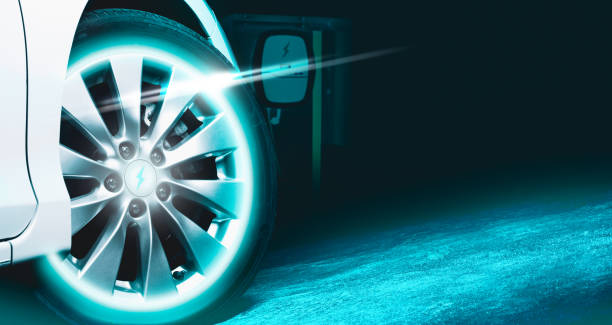
Electric vehicles’ recent surge in popularity can be largely attributed to one factor: range. Early iterations of the EV were hamstrung by battery limitations, and the distance you could travel before needing to stop for a charge was subsequently limited. But today, the average range of EVs has ballooned, landing anywhere from 250 – 500 miles.
But as with traditional gas vehicles, countless variables can impact your car’s performance. One of the most crucial components to extending your EV’s range is your tires. When shopping for tires for your EV, it’s important to remember the type of vehicle they’re designed to support.
In this guide, Avalon Honda helps maximize your range by explaining what you need to know about EV tires.
Switching From Your Original Tires: The Risks
It’s important to remember that the tires originally equipped on your electric vehicle were developed specifically for that car. EV manufacturers are well aware their vehicles have a unique set of needs, and the tires are designed to help maximize range.
That said, every car owner has their own preference when it comes to their vehicle’s accessories. To be clear, it’s perfectly okay to trade in for tires more to your liking. But you need to be aware of the performance-altering effects such a switch might have.
For example, you might understandably desire tires with better grip to enhance performance and braking. But by abandoning the tires originally intended for the EV, you’re leaving the vehicle vulnerable to factors like increased noise or decreased range. Conversely, if you opt for tires with slow wear to extend range, your EV could suffer from a downturn in performance.
The right balance certainly exists and is attainable. But regardless of what tires you select, you’ll always run the risk of unexpected issues when you deviate from the intended EV tires. Consult our Tire Center and we’ll help you make the selection most suited to you and your EV.
Watch Your Tires’ PSI
If you’ve owned a gas-based vehicle, you probably know that under-inflated tires can lead to increased fuel usage. The same basic principle applies to electric vehicles. Being low by even a few PSI can radically affect your rolling resistance, which is crucial to an EV’s range. (For this reason, low friction tires are often preferable for EVs, as they lead to lower rolling resistance, and therefore increased range, efficiency, and overall sustainability.)
It’s also important to remember during these cold winter months that the air pressure in your tires varies more significantly. Be sure to check the PSI levels of your car at least once per month this winter – and ideally more frequently than that.
And if issues still arise or persist, make an appointment with our Service Department as soon as possible.
Put a Charge in Your Life
Here at Avalon Honda, we pride ourselves in being at the forefront of modern ingenuity. Explore the 2023 Honda CR-V today, an unprecedented hybrid SUV of unparalleled performance and design.
Whether you’re looking to join the EV community, are interested in another vehicle, or are looking to sell, Avalon Honda has everything you need to help you roll smoothly into the new year.
A Brief History of Honda
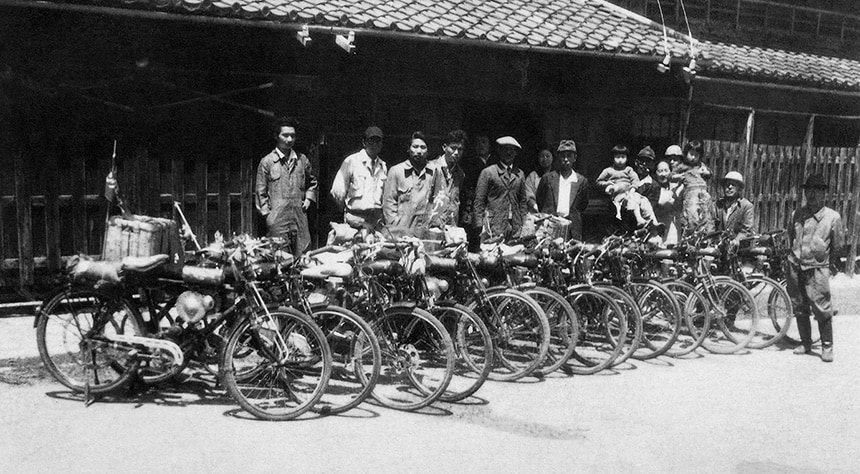
It’s a good time to be a Honda owner. They’re at the forefront of the electric vehicle and hybrid wave, with the 2023 Accord drawing favorable praise in the press over the Toyota Prius. And in addition to being the world’s number one motorcycle manufacturer since 1959, they’ve become the eighth largest automobile manufacturer in the world.
Today, Avalon Honda takes a look back to see how we got here with a brief trip through Honda’s illustrious history.
The Birth of Honda
The story of Honda is one born from passion. Soichiro Honda, born in 1906, was seemingly interested in automobiles from the cradle. He spent his early life as a mechanic, tuning cars and entering them in races.
In 1937, Honda founded Tokai Seiki, which translates to the Eastern Sea Precision Machine Company. This initial venture would face innumerable challenges throughout its infancy, as the piston rings Tokai Seiki supplied to Toyota as part of a contract were rejected by the established company’s quality control process. Soichiro Honda would require a stint at engineering school and a tour of Japan’s auto factories before his mass-produced piston rings were deemed acceptable by Toyota in 1941.
Dealings and Destruction During Wartime
The start of World War II proved to be a transitory period for Soichiro Honda. Toyota demoted him from president to managing director after taking a 40% stake in Tokai Seiki, and the company was put under the control of the Ministry of Commerce and Industry.
During the war, Honda aided Japan by assisting other countries in automating the production of military aircraft propellers. Behind the scenes, Honda was forging pivotal relationships with personnel at Toyota, Nakajima Aircraft Company, and the Imperial Japanese Navy.
When a US B-29 bomber attack derailed Honda’s plans by destroying a Tokai Seiki plant in 1944 (an earthquake shortly thereafter would also demolish their Itwa plant), Soichiro Honda hurriedly saved face. He sold off the remains of his company to Toyota, and then funneled that money into the Honda Technical Research Institute in 1946.
A Bicycle Built For You
Appropriately enough for a brand that would become synonymous with their motorcycles, the Honda Technical Research Institute also began with two wheels. Specifically, they built and sold motorized bicycles, which included attachable generator engines. Thus, the Honda A-Type was born.
In 1949, the Honda Technical Research Institute was liquidated and the Honda Motor Company was born. At the same time, Soichiro Honda met Takeo Fujiawa, who would prove to be the company’s business and marketing guru. He complimented Honda’s technical acumen so well that the two would continue working together the proceeding 24 years, until both stepped down together in 1973.
But at the start, motorcycles were the central vision. The D-Type, also named the Dream, was introduced in 1949; just 15 years later, Honda became the world’s largest manufacturer of motorcycles – a title they still hold today.
Restlessly, the company continued to branch out. Their first production automobile was the T360 mini pick-up truck, an eclectic vehicle that went on the market in the summer of 1963. Over the ensuing decades, Honda continued to expand both its product line and its dealing with other countries. They would even become the first Japanese company to launch their own luxury brand, the Acura, in 1986.
Drive a Honda into Tomorrow
Honda has continued to weather the trials and tribulations of the past few decades, but its storied history still has blank pages waiting to be filled with additional acclaim.
Become part of the company’s story by putting yourself behind the wheel of a new or used Honda today. Cape May County’s most reliable Honda dealership has a full inventory of enviable vehicles, including the 2023 Accord and 2023 CR-V. And our Collision Center is here to handle everything from windshield repair to bumper refinishing, ensuring a smooth ride regardless of what road history takes us down next.


